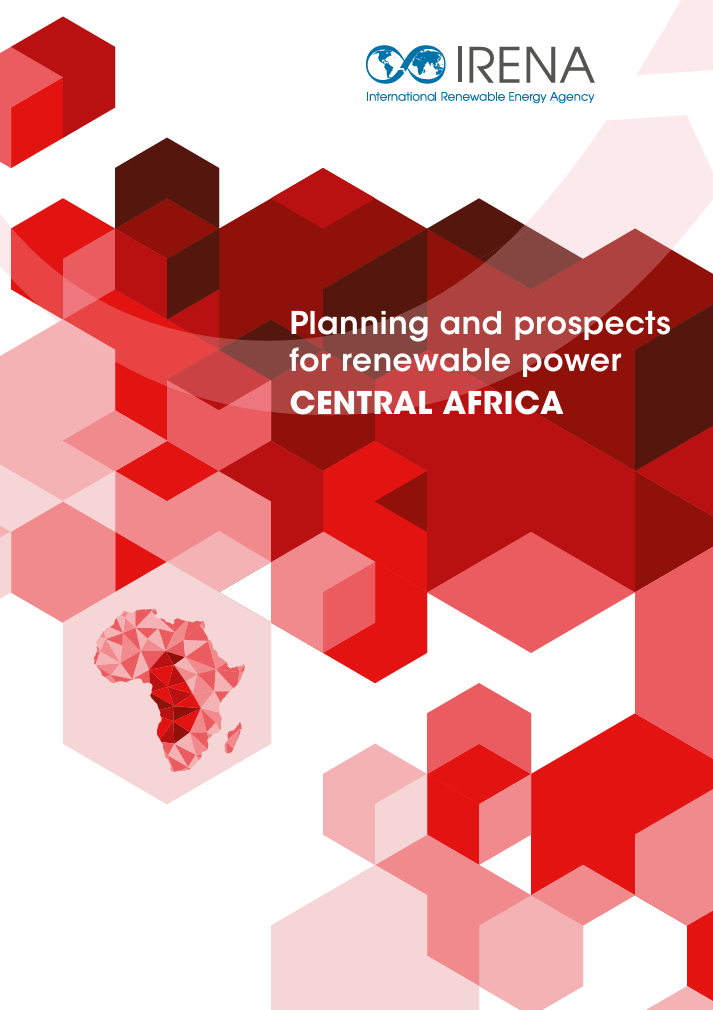Planning and prospects for renewable power: Central Africa
 |
rapport Jan 2025 ; 112 pages
Aut. Daniel Russo & Roland Roesch & Asami Miketa
Ed. IRENA - Abu Dhabi
Téléchargeable sous format: PdF
Téléchargeable chez l'éditeur
Résumé:
Ce rapport fait partie de la série IRENA, Planning and Prospects for Renewable Energy, et s’appuie sur les travaux du programme d’appui à la modélisation et à la planification de l’IRENA pour l’Afrique centrale, qui a été mis en œuvre en partenariat avec le Central African Power Pool (CAPP) en 2020-2023.
Le rapport comprend une introduction aux principales caractéristiques du paysage régional du secteur de l’électricité et une analyse régionale consolidée des scénarios potentiels pour le développement à long terme du secteur de l’électricité. Il documente partiellement les intrants et les extrants du modèle SPLAT-Afrique qui ont été élaborés par les participants au programme IRENA-CAPP, et fournit une base de données transparentes sur le secteur de l’électricité pour les parties prenantes locales. Alors que la région s’engage dans l’élaboration de son premier plan directeur régional officiel pour le secteur de l’électricité, les capacités construites par le programme IRENA-CAPP et ce rapport sont considérées comme des apports essentiels.
L’étude montre que malgré un besoin urgent d’investissement pour remédier aux faibles niveaux d’accès à l’électricité dans la région, il existe un potentiel d’expansion significative de la demande d’électricité. Dans tous les scénarios, les sources renouvelables, en particulier l’hydroélectricité, sont capables de répondre à la grande majorité de la demande prévue d’ici 2040 sur la base purement de l’optimisation des coûts et de l’excellente qualité des ressources dans toute la région d’Afrique centrale. L’étude montre également un grand potentiel inexploité pour accroître les échanges transfrontaliers d’électricité, qui tiendrait compte des ressources complémentaires afin de réduire les coûts régionaux globaux et d’offrir une plus grande flexibilité au système. Abstract:
This report is part of the IRENA series, Planning and Prospects for Renewable Energy, and builds on the work of the IRENA Regional Modelling Analysis & Planning Support Programme for Central Africa, which was implemented in partnership with the Central African Power Pool (CAPP) in 2020–2023.
The report includes an introduction to key characteristics of the regional power sector landscape, and a consolidated regional analysis of potential scenarios for long-term power sector development in the region. It partially documents the inputs and outputs of the SPLAT-Africa model that were elaborated by participants in the IRENA-CAPP programme, and provides a foundation of transparent power sector data for local stakeholders. As the region embarks on the development of its first official regional power sector masterplan, the capacity built by the IRENA-CAPP programme and this report are both considered essential inputs.
The study shows that despite a urgent need for investment to address low levels of electricity access in the region, there is potential for significant expansion of electricity demand. In all scenarios, renewable sources, particularly hydropower, are able to meet the vast majority of projected demand to 2040 based purely on cost optimisation and excellent resource quality across the Central African region. The study also shows large untapped potential for greater cross-border electricity trade, which would take advantage of complementary resources to reduce overall regional costs and provide system flexibility. Contents:
EXECUTIVE SUMMARY ................................................9
1 INTRODUCTION .......................................................12
1.1 Background: The IRENA Regional Modelling Analysis & Planning Support Programme .........12
1.2 The report in context ...................................13
2 OVERVIEW OF METHODOLOGY ................................15
3 REGIONAL POWER SECTOR OVERVIEW AND KEY SCENARIO ASSUMPTIONS ............18
3.1 General definition of scenarios ....................35
4 MODELLING RESULTS ................................................36
4.1 Capacity and generation ...............................36
4.2 CO2 emissions ..............................................72
4.3 Cross-border electricity trade ......................74
4.4 System costs ...............................................85
5 CONCLUSIONS .......................................................100
REFERENCES ...........................................103
APPENDIX: METHODOLOGICAL DETAILS ................104
Public-Cible:
Mots clefs: |
accès à l’électricité (CI) (DT) (OP) (ope) , électrification (CI) (DT) (OP) (ope) , hydroélectricité (CI) (DT) (OP) (ope) |
Pays concerné: |
Editeur/Diffuseur: |
|
IRENA
-
International Renewable Energy Agency - Abu Dhabi - Emirats Arabes Unis |
En cas de lien brisé, nous le mentionner à communication@pseau.org